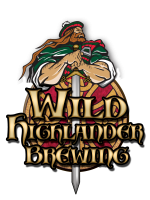Hops
|
Amount
|
Variety
|
Cost
|
Type
|
AA
|
Use
|
Time
|
IBU
|
Bill %
|
|
2 oz |
Galena2 oz Galena Hops |
|
Pellet |
11.5 |
Boil
|
60 min |
53.59 |
53.3% |
|
1.75 oz |
Simcoe1.75 oz Simcoe Hops |
|
Pellet |
12.7 |
Boil
|
10 min |
18.78 |
46.7% |
|
3.75 oz
/ $ 0.00
|
Hops Summary
|
Amount
|
Variety
|
Cost
|
IBU
|
Bill %
|
|
2 oz |
Galena (Pellet) 1.9999999954251 oz Galena (Pellet) Hops |
|
53.59 |
53.3% |
|
1.75 oz |
Simcoe (Pellet) 1.749999995997 oz Simcoe (Pellet) Hops |
|
18.78 |
46.7% |
|
3.75 oz
/ $ 0.00
|
Mash Guidelines
|
Amount
|
Description
|
Type
|
Start Temp
|
Target Temp
|
Time
|
|
17 qt |
Steep Grains |
Temperature |
-- |
155 °F |
20 min |
|
2 qt |
Rinse Grains |
Sparge |
-- |
170 °F |
2 min |
Other Ingredients
|
Amount
|
Name
|
Cost
|
Type
|
Use
|
Time
|
|
1.10 oz |
Yeast Nutrient
|
|
Other |
Boil |
15 min. |
Yeast
|
White Labs - Dry English Ale Yeast WLP007
|
|
Amount:
|
1 Each |
Cost:
|
|
|
Attenuation (avg):
|
75%
|
Flocculation:
|
Med-High |
|
Optimum Temp:
|
65 - 70 °F |
Starter:
|
Yes |
|
Fermentation Temp:
|
68 °F
|
Pitch Rate:
|
1.5 (M cells / ml / ° P)
817 B cells required
|
|
|
White Labs WLP099
|
|
Amount:
|
1 Each |
Cost:
|
|
|
Attenuation (avg):
|
0%
|
Flocculation:
|
|
|
Optimum Temp:
|
0 - 0 °F |
Starter:
|
Yes |
|
Fermentation Temp:
|
68 °F
|
Pitch Rate:
|
1.5 (M cells / ml / ° P)
817 B cells required
|
|
|
$ 0.00
Yeast Pitch Rate and Starter Calculator
|
Target Water Profile
Broken Arrow, OK
Notes
Step by Step
One week before brew day, get a WLP007 yeast starter going. When starter activity slows, decant the spent wort and add fresh wort.On brew day, crush the grains and place in two steeping bags. Steep the bags at 155 °F (68 °C) in 16 quarts (15 L) of water for 20 minutes. Rinse the grains with 2 quarts (2 L) of 170 °F (77 °C) hot water. Add dried malt extract (DME) and table sugar. Boil for 60 minutes, adding the hops at the specified times. Chill the wort to 70 °F (21 °C) and add water to achieve 5 gallons (19 L) of wort. Aerate the wort and add WLP007 starter (decanting the spent wort first). When fermentation slows, take a gravity reading and add WLP099 starter (if needed) to achieve a final specific gravity of 1.035. Keg or bottle carbonate, aiming for a carbonation level of 2.0–2.2 volumes of CO2. Once carbonated, condition at cellar temperature for several months. Flavor should peak at about one year and remain there for at least another year.
Tips for Success:
Pitching plenty of healthy yeast is paramount for a high gravity brew. When in doubt, pitch more. Be patient with the fermentation and conditioning process. Beer doesn't have a schedule. For bottle carbonation, pitch fresh yeast at bottling time if the WLP099 wasn't needed during the brew day. Give the bottles adequate time to carbonate. This beer needs to age, anyway. You'll thank me later for saving it until its peak. If you would like, try aging this beer in a bourbon barrel. How long to barrel condition is a matter of individual taste. Our club likes a full bourbon flavor, so we age the beer for several months. We don't worry about temperature. The barrel's alive, and varying temperatures allow the wood to expand and contract, imparting those wonderful oak and bourbon flavors.

Last Updated and Sharing

- Public: Yup, Shared
- Last Updated: 2016-01-13 22:23 UTC
For quick copying and pasting to a text based forum or email.
Click the Download as HTML file button below.
Recipe costs can be adjusted by changing the batch size. They won't be saved but will give you an idea of costs if your final yield was different.
|
Cost $ |
Cost % |
| Fermentables |
$ |
|
Steeping Grains
(Extract Only) |
$ |
|
| Hops |
$ |
|
| Yeast |
$ |
|
| Other |
$ |
|
| Cost Per Barrel |
$ 0.00 |
|
| Cost Per Pint |
$ 0.00 |
|
| Total Cost |
$ 0.00 |
|
Discussion about this recipe:
